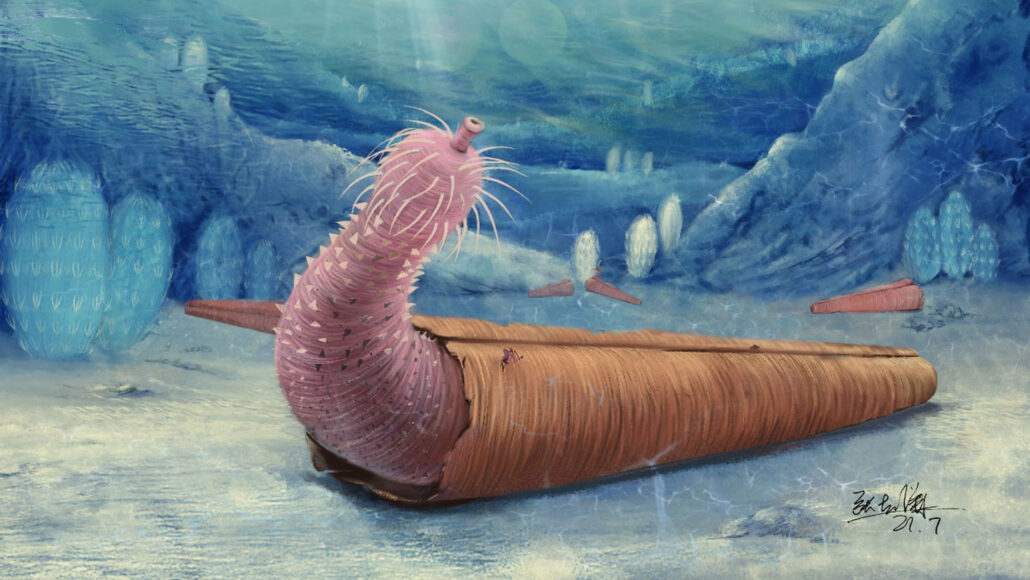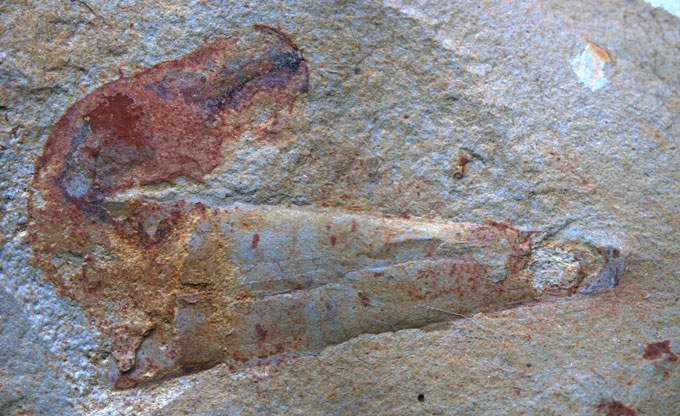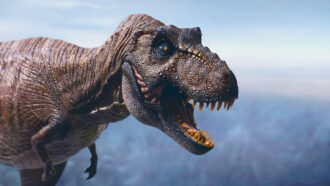‘Penis worms’ could have been the original hermits
The soft-bodied critters seem to have lived in abandoned shells some 500 million years ago

Sea creatures known as penis worms (one illustrated) hid out in empty shells about 500 million years ago, fossils now suggest.
Zhiqian Zhang/ Yunnan University
By Sid Perkins
Hermit crabs have been taking shelter in abandoned shells for millions of years. But new evidence suggests that this “hermit” lifestyle goes back far longer than that.
Hermit crabs are among the few modern species — including some crustaceans and worms — to live in shells cast off by other sea creatures. The hermits hole up in empty shells mostly for protection against predators. Until recently, the earliest known fossils thought to show hermit behavior were around 170 million years old. Scientists have now unearthed fossils of hermits that appear almost three times as old.
The fossils, which date back some 500 million years, were found in rocks made of seafloor sediment. They turned up in what is now southern China. They seem to show sea creatures called priapulid worms commonly known as “penis worms.” The animals get that name from their suggestive body shape. The cone-shaped shells in which they were taking shelter probably came from ancient marine invertebrates known as hyoliths.
The team found four penis worms inside shells in the Chinese rocks. There were no priapulids without shells. So the researchers propose that the worms had lived inside the shells. The team shared the discovery November 8 in Current Biology.

Larger worms generally inhabited larger shells. That suggests the animals picked shells to match their size. The worms probably moved to new shells when they outgrew their old homes, says Martin Smith. He’s a paleontologist at Durham University in England. Smith was part of the team that described the new fossils.
Today’s hermit crabs also move into bigger shells as they grow, Smith says. And interestingly, although there are 20 or so species of penis worms today, none live the hermit lifestyle.
The researchers “have made some good observations to support their claims,” says Jakob Vinther. A paleontologist, Vinther works at the University of Bristol in England. He did not take part in the new study. It’s not clear whether the priapulids carried their shells from place to place, he says. That’s what modern hermit crabs do. The ancient worms may have used shells as mobile homes, too. Or the animals may have simply settled down inside a shell and stayed put.
“Perhaps it’s not a surprise that some priapulids became hermits,” Vinther says. The newly discovered fossils date back to the Cambrian Period. That time was marked by an explosion of new life forms. This dramatic increase of species included plenty of new predators. Critters like penis worms would have needed creative new ways to avoid being eaten.







